Dead Trees and Live Ones
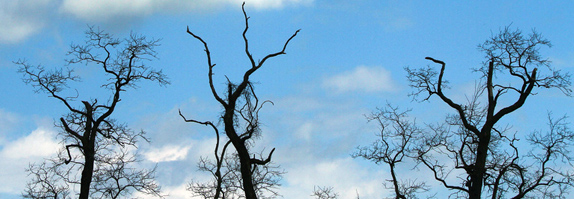
It’s like finding the skeleton of a whale, or stumbling upon an elephant’s graveyard – seeing the remains of huge dead trees, still in the ground, but destined for dangerous falls.
There are no hard numbers, but some urbanists estimate that as many as three to five percent of the treescapes in western cities have died off in the last decade. We don’t see it much around Albuquerque unless we are looking for it. But once we do, we find the bones of old trees in most neighborhoods. And there’s more morbidity to come.
These are not the remains of natural deaths. They’re carcasses of the victims of dehydration. Some trees died not from neglect, but from the implosion of the housing bubble, home owners who had watered their trees being driven from their homes in such numbers that banks, not known for their horticultural zeal, couldn’t keep up with the garden maintenance. Many other big trees died here because their caregivers were trying, nobly in many cases, to reduce their water consumption. Some folks just can’t afford the water bill.
For those trying to save money, I bet many learned the basic math of tree death fast. No trees, no shade; no shade means higher water bills from running the swamp cooler all day, and higher electric bills too.
It’s a delicate balance for most of us. But the numbers over the long haul would prove that shade saves more water than it costs. This May, the Albuquerque-Bernalillo County Water Utility Authority urged residents to preserve their trees for that very reason. Even in terribly dry times, trees are more water efficient than swamp coolers.
Some places like Las Vegas, New Mexico, have been in such a long and terrible drought that they are forbidden to water virtually anything. We passed by one house on a walk in an historic neighborhood not long ago and marveled at the greenery and still healthy trees. On the gate we saw a sign that told the whole story. It said, defensively, “We’re using ONLY greywater.” And they were doing quite well at it. But on hot days, Las Vegas swelters. With no shade, many folks are reduced to trying to cool their houses down by turning on the fans, but not the pumps, at night.
That’s the thing about keeping trees and shrubs alive in a drought. Using greywater is real possibility, if you’re able to cart it around. Most of us don’t have greywater systems in our homes. But you always have to experiment to see what works. How much water does each of your trees and shrubs really need? That’s the basic question. And the answer can only be determined through loving and precise observation.
Sometimes it’s hard to tell if your big plants are suffering from the effect of a hard frost or if you’re not watering them enough. That was true with our pyracanthas. As I watered them more, I came see that their die back might have been caused by both the three-day freeze last winter and my zeal to ration water.
Some trees can sustain themselves on what seems like a starvation diet of water. Others simply cannot. Weed trees like elms and mulberry, prodigious producers of shade, flourish with lots of water, but can be kept going with much less, at least for a while.
The 2006 city Municipal Forest Resource Analysis counted 21,519 publically managed trees in the city’s parks and medians. They’re probably the best maintained trees around, but even some of them have fallen victim to bad droughts. The city has planted 73 different species with Honey Locust, Modesto Ash, Siberian Elm, London Planetree and Desert Willow the most numerous species.
In the l970s, the city worked with developers to create parking lot forests. I’m sure all of us look for spaces under those trees whenever we can find them in those asphalt heat sinks that turn our cars into ovens. Parking under one of those tree skeletons, of course, would bring no relief at all.
Critters We Have Known – Cat Politics
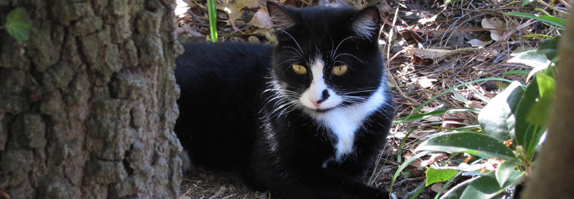
A human will never fully grasp the intricacies of cat politics in the garden. We know something is going on with territorial matters, but we’re never quite sure what.
For years in the north Valley before infill crammed big houses into old orchards and fields, battered feral toms would roam into one’s garden looking for a place to rest, and maybe some indulgent folks to feed them.
Sentimentalists that many of us are, we were often rudely awakened to cat negotiations and boundary disputes when resident males, even neutered ones, took exception to the new arrivals and drove them off.
These politics could take on startling elaborations. Howard, for instance, a stylish, but insistent long haired ginger tom, did not like anything to make a mess in his back forty. The malign appearance of dog or cat poop would spark him to frenzies of scraping and piling until dirt covered the offending matter.
It was never clear who ran the show in the garden early on, Howard or Sydney, a strapping Charles Atlas of a tuxedo cat, who nipped at a friendly hand from time to time, but who never failed to greet the folks with his sizable and stalwart bulk when they returned home.
One day a horse and rider, old friends, appeared in the garden. The horse, to Howard’s horror, delivered some excellent fertilizer. Talk about a frenzy. Howard went after the steaming pile with a vengeance, and seemed to spend much of the afternoon trying to cover it up. But it was no use.
Howard realized his time had come. He threw up his paws, shook his head, and handed over the territorial responsibilities to Sydney and retired inside the house where folks would appreciate his impeccable hygiene and comment on the contours of his beautiful body.
Sydney became a general. He’d vet incoming cats, scare most of them off, but would keep a few as lieutenants to patrol the perimeters. A period of gruff serenity ruled the garden for many years.
A Moment of Spiritual Joy in Old Mesilla Plaza
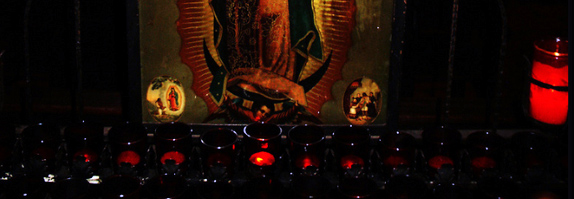
The experience was so deeply moving that it’s almost impossible to write about. But I’ll try to at least describe it.
Walking around the plaza in Old Mesilla in the evening, after a good supper at La Posta, we passed by the twin towers of the beautiful Basilica of San Albino. To the west is a row of low historic adobe buildings, housing a number of shops and a fine little bookstore.
After walking off supper several times around the plaza, we noticed that January night a dark entrance way to an inner courtyard that serves, it turned out, as a small parking area.
We walked into the darkness with some unease, saw the outlines of the cars, and turned around to leave. And then we saw it.
A gently glowing, candle-lit shrine to the Virgin of Guadalupe, in a tiny, almost invisible grotto nestled to one side of the entrance, with bouquets of flowers, small photographs of loved ones, and notes of thanks on its altar.
It was so modest, so startlingly beautiful in the darkness that we could feel the warmth it radiated, the warmth of the pure and joyous generosity of devotion.
It took our breath away. It warmed us to the core.
There in the darkness we found ourselves in the presence of the deep goodness and humility at the heart of human virtue.
In these strangely dark and confusing times, we often think of the peaceful joy that shrine with its Guadalupana gave us, a gift of kindness brought to us by a person or group of people we’ll never be able to thank directly, but who we will always admire.
Black and White Squad Cars
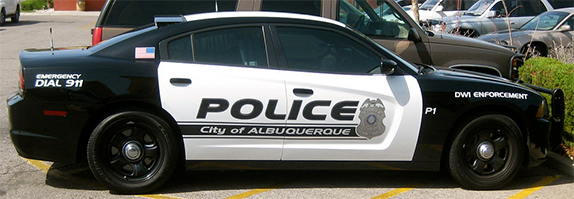
The late Essie English, a teacher and one of matriarchs of the John Marshall Neighborhood Association in the South Valley a few decades ago, told me that from her perspective it was “Law and Order in the Valley, and Police Protection in the Heights.”
While I’m sure that rule will always hold, there’s a symbol speeding around city streets that says it’s on the way to being law and order all over town.
It’s those new black and white squad cars zooming and drag racing. They’re Dodge Chargers. They never seem to be going within the speed limit when I see them. I thought police could only speed when they had their flashing lights or siren on.
Is the choice of those cars trying to send us all a message? The old police cars had a homey touch. Written on the sides in cursive were the words “In Step With Our Community.” That’s “our” community, as if we’re all in this together. That one line always took the edge off my old police reporter’s wariness of the cops, especially when they are driving cars at high speeds with ominous tinted windows.
Maybe the new squad cars, that don’t have such a communitarian sentiment written on them, are telling us the police are no longer in step with our community.
Maybe they think they should be out of step with the community, that being in step means they take their marching orders from the citizens they serve, not from the hierarchy, that being in step is going soft on crime, as if everyone in town is a potential criminal.
I don’t care if Homeland Security is recommending such a change in squad cars around the country, and if all the police departments in the nation are going to the old Dragnet, Highway Patrol black and whites.
I want our police to be in step with our community. But maybe that’s why they’re removing the slogan. Perhaps, it’s become just a slogan and they haven’t been in step for years.
Postal Troubles
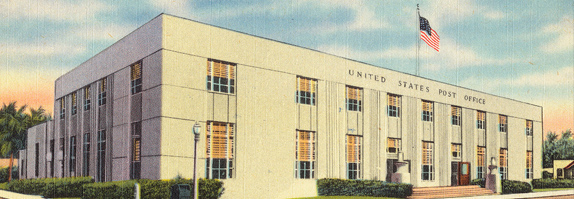
It’s a small thing. But it’s going to get much bigger and more onerous this decade – the vanishing of the postal service as we have come to know it.
We got a little feel of how it’s going to go the other morning when we went to post some bills at a blue mail box next to Booksworks on Rio Grande. We’ve mailed snail mail there for years.
It was like a Laurel and Hardy cartoon. I went to open the box and lo and behold the thing had disappeared. It was gone. The bolts and their nuts were still in the ground. No one stole it apparently. And there was no note of explanation. The post office was just cutting back on a route to save some money, or so we were told by some folks in the area.
Onerous burdens placed by Republicans in Congress on the postal service to bust their union and privatize the whole operation could mean closure of more than 3,300 post offices nationwide. That means not only post offices will close, but your P.O. Box will be moved, inconvenience will be the order of the day, the reliable old U.S. Mail will become a victim of the Tea Party government haters currently clogging up our government with their extremist sludge.
Why should the Postal Service be required to bank billions upon billions of dollars to pre-pay 75 years of employee health benefits? No other federal agency has ever been asked to do anything like that. It’s all just part of the Republican quest to turn the whole nation into a company store.
So the prophets of privatization in the red states have sucked up my blue mailbox. There’s more than just colors in that metaphor. The Postal Service is the great engine of democracy and egalitarianism in America. My little post box served probably hundreds of people with a kind of ease that was downright old fashioned and downright humane.
Once you lose something like that, a comfort you took for granted, you begin to understand how valuable it was, and how nasty the world would be without it.
(Original Provincial Matters drawing by Rini Price. Creative Commons story images via flickr. Dead Trees by Chris Waits. Vigilant kitty by geraldbrazell. Guadalupe shrine by Pamla J. Eisenberg. Police Charger by Rescuenav. Post Office by Boston Public Library.)

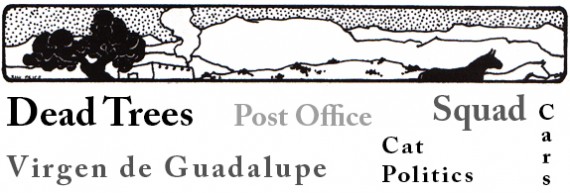


Responses to “Provincial Matters, 7-22-2013”